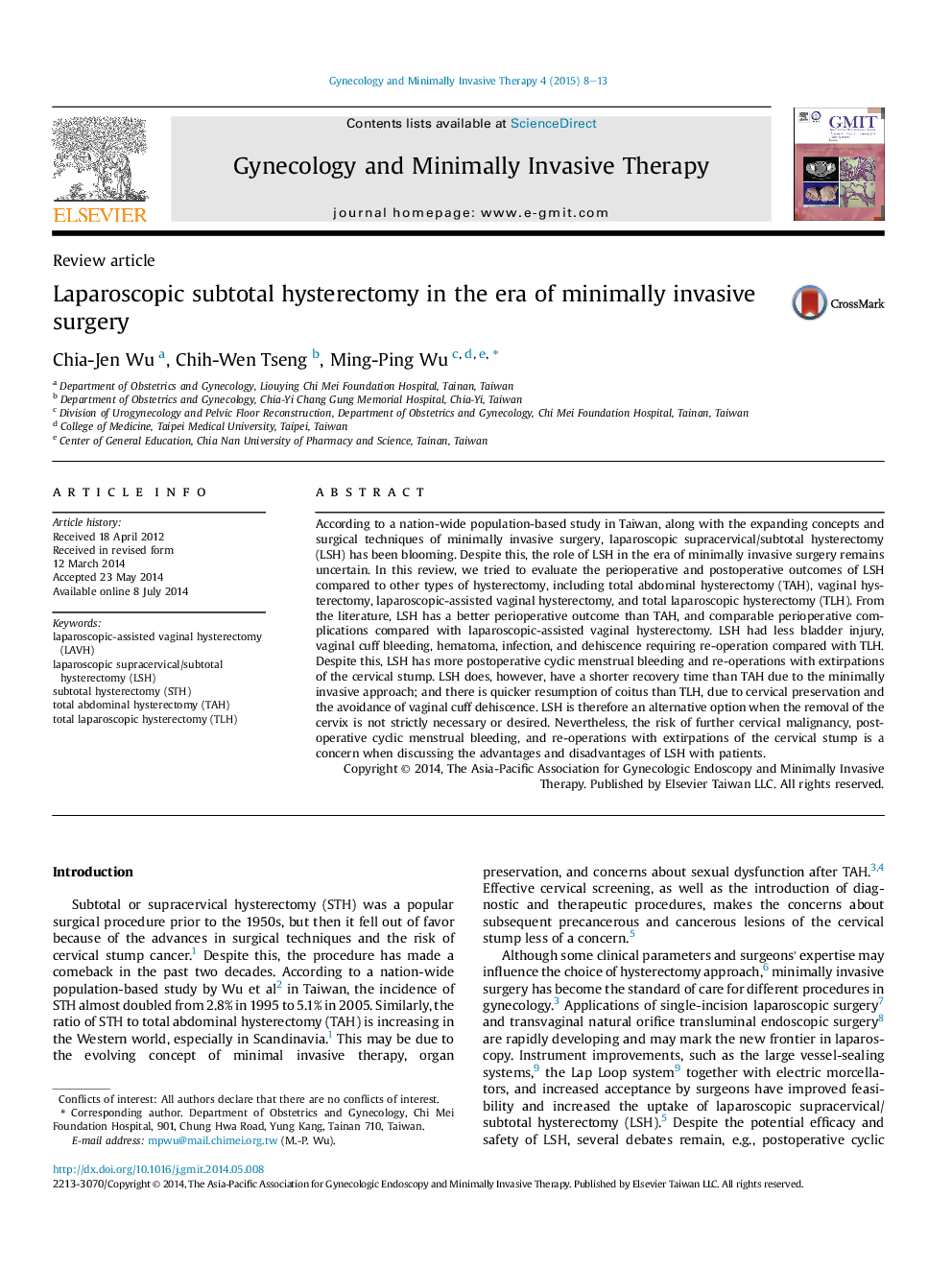| Article ID | Journal | Published Year | Pages | File Type |
|---|---|---|---|---|
| 3951241 | Gynecology and Minimally Invasive Therapy | 2015 | 6 Pages |
According to a nation-wide population-based study in Taiwan, along with the expanding concepts and surgical techniques of minimally invasive surgery, laparoscopic supracervical/subtotal hysterectomy (LSH) has been blooming. Despite this, the role of LSH in the era of minimally invasive surgery remains uncertain. In this review, we tried to evaluate the perioperative and postoperative outcomes of LSH compared to other types of hysterectomy, including total abdominal hysterectomy (TAH), vaginal hysterectomy, laparoscopic-assisted vaginal hysterectomy, and total laparoscopic hysterectomy (TLH). From the literature, LSH has a better perioperative outcome than TAH, and comparable perioperative complications compared with laparoscopic-assisted vaginal hysterectomy. LSH had less bladder injury, vaginal cuff bleeding, hematoma, infection, and dehiscence requiring re-operation compared with TLH. Despite this, LSH has more postoperative cyclic menstrual bleeding and re-operations with extirpations of the cervical stump. LSH does, however, have a shorter recovery time than TAH due to the minimally invasive approach; and there is quicker resumption of coitus than TLH, due to cervical preservation and the avoidance of vaginal cuff dehiscence. LSH is therefore an alternative option when the removal of the cervix is not strictly necessary or desired. Nevertheless, the risk of further cervical malignancy, postoperative cyclic menstrual bleeding, and re-operations with extirpations of the cervical stump is a concern when discussing the advantages and disadvantages of LSH with patients.
